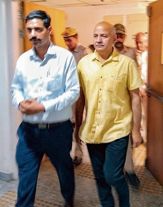
Photo: Thinkstock
NEW YORK
Just as it is possible to detect alcohol consumption, NASA has now developed a test to detect sleep loss in people by looking at a variety of components of human eye movements.
As sleep loss is linked to poor judgement and therefore dangerous consequences, this test can have important implications for individuals who work in jobs requiring vigilant monitoring and precise motor action, such as military personnel, surgeons and truck drivers.
For example, if a surgeon comes to the operation theatre without getting adequate sleep, the test may indicate that he/she must first get some rest to do the job properly.
"By looking at a wide variety of components of human eye movements, we could not only detect sleepiness but also distinguish it from other factors, such as alcohol use or brain injury, that we have previously shown cause subtly different deficits in eye movements," said study senior author Lee Stone from NASA Ames Research Center in Mountain View, California.
The study, published in The Journal of Physiology, found that a set of easily-obtainable eye-movement measures could be used to provide a sensitive and reliable tool to detect small neural deficits.
Importantly, these measures could even be used to distinguish sleep-related impairment from that due to alcohol or brain injury.
To establish a baseline, the research team had a group of participants experience two weeks with a regular 8.5 hours per night sleep schedule and abstain from any alcohol, drugs or caffeine so that they were sure they started the experiment completely well-rested with no sleep debt or disruptions.
They then had the participants spend up to 28 hours awake in the Fatigue Countermeasures Laboratory at NASA Ames, where they tested them periodically throughout the day and night to monitor how their visual and eye-movement performance changed throughout the day-night cycle.
By using eye movement research techniques, they were able to generate reliable effects showing trends of increasing impairment throughout the night for components of motion perception, such as smooth, continuous tracking eye movements and effects on the small, episodic, jumping corrective eye movements.
The researchers found that when participants were asked to track stimuli with unpredictable onset, direction, speed and starting location, human eye movements were dramatically impaired.
"There are significant safety ramifications for workers who may be performing tasks that require precise visual coordination of one's actions when sleep deprived or during night shifts," Stone said. IANS



























